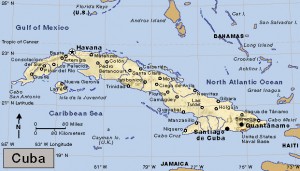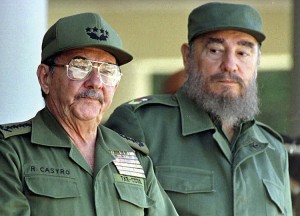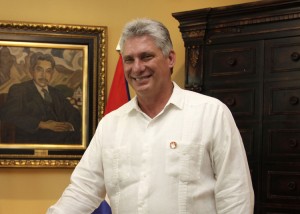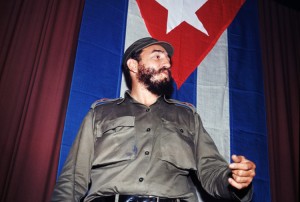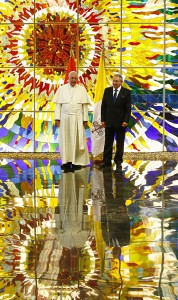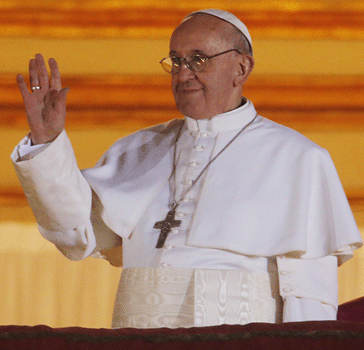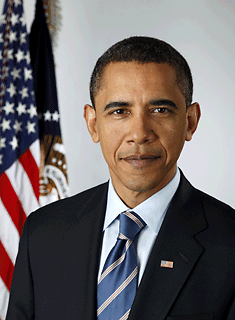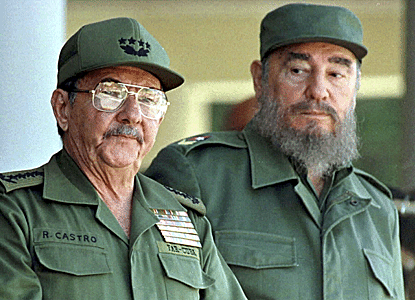Cuban Revolution 60
Wednesday, January 2nd, 2019January 2, 2019
On Jan. 1, 1959, 60 years ago yesterday, Cuban dictator Fulgencio Batista fled Havana for the Dominican Republic, leaving control of Cuba to rebel forces led by Fidel Castro. Batista’s exit marked the end of the Cuban Revolution, which had started in 1953, and the beginning of the Communist Castro Era in the Caribbean island nation.
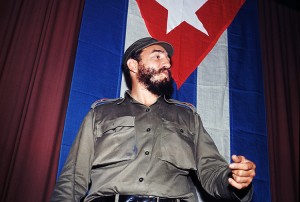
Fidel Castro speaks before a Cuban flag in 1966. Castro led a rebel movement that took control of Cuba 60 years ago on Jan. 1, 1959. Credit: AP Photo
On July 26, 1953, Fidel Castro, a young lawyer, tried to start a revolution against Batista by leading an attack on the Moncada army barracks in the city of Santiago de Cuba. Fidel and his brother Raúl were captured and imprisoned. Many of their followers were either imprisoned or murdered.
The Castro brothers were released from prison in 1955. They then traveled to Mexico, where they met the Argentine revolutionary Ernesto “Che” Guevara. In 1956, while in Mexico, the brothers organized the 26th of July Movement, named for the date of their first revolt. The revolutionary forces landed in Oriente Province in late 1956. Most of the rebels were imprisoned or killed. However, the brothers and about a dozen of their followers escaped to the nearby Sierra Maestra mountains.
In 1957, the rebel forces began to wage a guerrilla war against the Cuban government. The same year, university students stormed the presidential palace in an attempt to assassinate Batista. Government efforts to crush dissent increased the people’s support of the rebels. Continued poor economic conditions also led to growing support for the rebels, particularly among workers, peasants, students, and the middle class. By mid-1958, Batista’s government had lost the support of the United States and most Cubans.
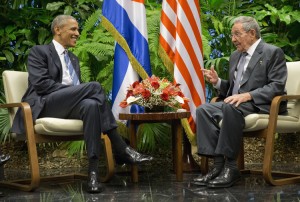
U.S. President Barack Obama meets with Cuban President Raúl Castro in Havana in 2016, the year after diplomatic relations were restored between the two nations. Credit: © Pablo Martinez Monsivais, AP Photo
After the revolution, Fidel Castro became prime minister and later president of Cuba. Under Castro, U.S.-Cuba relations quickly became strained, and Cuba developed stronger ties with the Soviet Union. War between Cuba and the United States was narrowly averted during the 1961 Bay of Pigs invasion and the 1962 Cuban missile crisis. Decades of hostility finally eased during the U.S. presidency of Barack Obama, and U.S.-Cuba diplomatic relations were restored in 2015. Fidel Castro died in late 2016, and his brother Raúl, who had succeeded Fidel as president, stepped down in April 2018, ending 59 years of Castro rule in Cuba.

